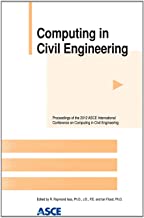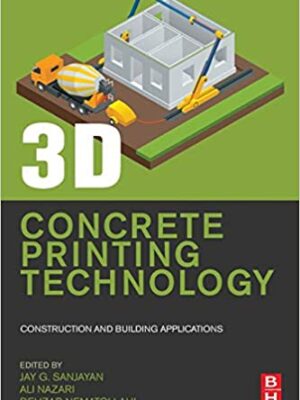Bridge Engineering : Classifications, Design Loading, and Analysis Methods
Original price was: ₹7,407.34.₹5,925.87Current price is: ₹5,925.87.
ISBN: 9780128044322
Author/Editor: Weiwei Lin
Publisher: Elsevier
Year: 2017
1 in stock (can be backordered)
Description
Bridge Engineering: Classifications, Design Loading, and Analysis Methods begins with a clear and concise exposition of theory and practice of bridge engineering, design and planning, materials and construction, loads and load distribution, and deck systems. This is followed by chapters concerning applications for bridges, such as: Reinforced and Prestressed Concrete Bridges, Steel Bridges, Truss Bridges, Arch Bridges, Cable Stayed Bridges, Suspension Bridges, Bridge Piers, and Bridge Substructures. In addition, the book addresses issues commonly found in inspection, monitoring, repair, strengthening, and replacement of bridge structures.
Includes easy to understand explanations for bridge classifications, design loading, analysis methods, and construction
Provides an overview of international codes and standards
Covers structural features of different types of bridges, including beam bridges, arch bridges, truss bridges, suspension bridges, and cable-stayed bridges
Features step-by-step explanations of commonly used structural calculations along with worked out examples
Additional information
| Weight | 0.43 kg |
|---|
Product Properties
| Year of Publication | 2017 |
|---|---|
| Table of Contents | 1. Introduction of Bridge Engineering 2. Bridge Planning and Design 3. Materials for Bridge Constructions 4. Loads and Load Distribution 5. Bridge Deck Systems 6. Reinforced and Prestressed Concrete Bridges 7. Steel Bridges 8. Truss Bridges 9. Arch Bridges 10. Cable-Stayed Bridges 11. Suspension Bridges 12. Bridge Bearings and Substructures 13. Inspection, Monitoring, and Assessment 14. Repair, Strengthening, and Replacement |
| Author | Weiwei Lin |
| ISBN/ISSN | 9780128044322 |
| Binding | Paperback |
| Edition | 1 |
| Publisher | Elsevier |
You must be logged in to post a review.






Reviews
There are no reviews yet.